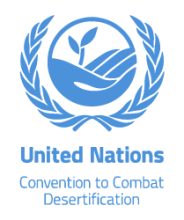targets for 2020 and an outlook for 2030
Resource information
This paper explores the land footprint related to EU bioenergy consumption and aims to contribute to the discussion on how EU bioenergy targets impact on scarce global land resources, both cropland and forest areas. In the last decade, demand for EU bioenergy has risen significantly, largely driven by political targets and subsidies. Our calculations show that the total land footprint related to EU bioenergy is likely to expand from 44.5 Mha (an area of the size of Sweden) in 2010 to 70.2 Mha (an area of the size of Poland and Sweden combined) in 2030. This paper therefore calls for a critical view on both area requirements and environmental impacts with respect to the use of scarce natural resources for EU bioenergy purposes. Land footprint related to EU bioenergy demand In this study, cropland and forest land requirements are calculated on the basis of
EU demand forecasts for bioenergy towards 2020 and 2030. This required land area, the so-called global land footprint, includes both domestic land and land related to imports of bioenergy feedstock and end-products. Separate land footprints have been reported for sub-sectors (biofuels for transport, bio-heat and bio-electricity) and land-related biomass sources (agricultural crops and forest biomass).


